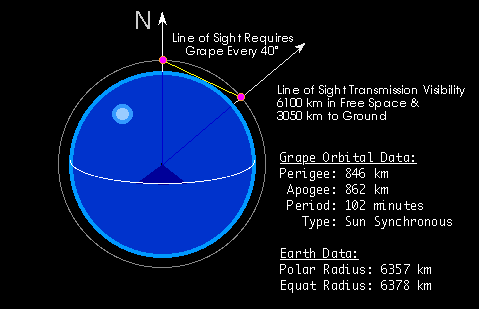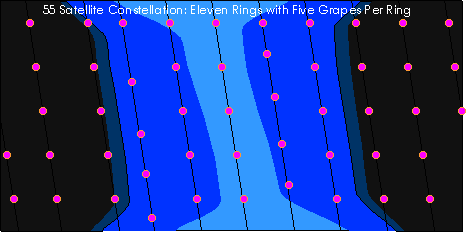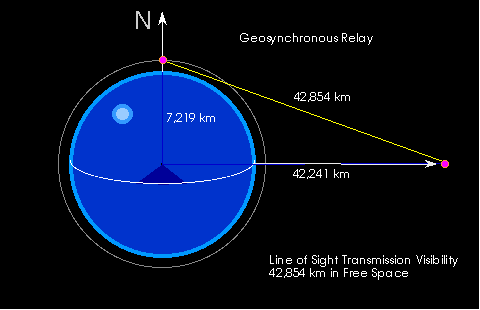
Assume
· the spacecraft senses an entire scanline simultaneously.
· the spacecraft transmits the scanlines continuously.
· the scanline is 1024 pixels wide.
· each pixel consists of 4 channels, red, green, blue and alpha
· each channel is 8 bits, or one character
· no compression scheme is used
Therefore
· the packet space required is 4096 characters per scanline
Assume
· a spacecraft is in sun synchronous orbit
· a spacecraft makes 14.1 orbits per day
· the earth is half as tall as it is wide (cylindrical equidistant projection)
Therefore
· the earth is 14438 pixels wide and 7219 pixels high
Assume
· pixels on the edge of the scanline are distorted due to "fall-away"
· the resolution is rounded UP to the nearest power of two
Therefore
· the earth is 16384 pixels wide and 8192 pixels high
Assume
· a spacecraft orbits the earth in 102 minutes,
· that the spacecraft is in daylight 51 minutes
Therefore
If the spacecraft communicates continuously the data rate is:

or well within voice grade data rates. Perhaps an insightful person could make some novel use of telephone company bandwidth for telemetering the data.
In any case, this spacecraft requires a 14.4 kBaud repeater to communicate in a coordinated network, or a 14.4 kBaud transmitter if it communicates with a geosynchronous relay.
The interested reader can calculate the minimum transmitter power and antenna size required for this configuration, and thus the scaling consequences. Please send it to me at the address below. If you're even close, you're on an official, "grapefruit" staff member.
Assume
· Once a day buffered communication:
If it does not, then the satellite has, conservatively, a 23 minute window, once a day, to download all 14.1 orbits scanlines:

DESIGN DECISION
Either
1) make a spacecraft that relays data via a constellation of 54 others like itself (55 total) with a transmitter range of 6100 km (free space)

OR
2) make a spacecraft that relays data via geosynchrounous links (1 total)
radio range 42,854 km free space
